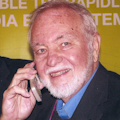Constant Current Source Cells: A Breakthrough. Really?
Most of us are used to thinking in terms of voltage sources so there is rarely a day goes by that we do not think about voltage source loading or use Thevenin’s theorem. But what about current sources? Edward Norton of Bell Labs developed his current source theorem back in 1926 as a way to realize an alternative kind of circuit analysis. A current source supplies a fixed current with high (ideally infinite) parallel internal impedance. Current source analysis (Kirchhoff’s current law, etc.) is useful for some circuits but actual sources are hard to come by in hardware.
The only practical way to realize a current source is to bias a bipolar transistor, JFET or MOSFET to provide a desired fixed current. These work well over a narrow range and are widely used. But what if there was such a thing as a current cell? It would be the equivalent of common voltage cells that we usually call batteries.
Rumor has it that a to-be-named company will soon announce a proprietary line of constant current cells in the same form factor as existing voltage cells. For example, the AAA-size might be 100 µA, AA-size might provide 1 mA and so on. Maybe there will be a 10 µA CR2032-size button cell. Maybe a 312-size hearing aid cell size that delivers 1 µA. Or what about a 1 A D cell size? How about a 100 A Interstate car battery size? The cells are said to be chemical devices like voltage cells, but how do they work? And how do you scale it? With a current divider? More importantly is what does one do with a constant current cell? Just what might the applications be? Nothing comes to my mind. Battery charging?
One thing that does come to mind is safety. If you hold an AA size 1 mA cell in between your fingers, and your body/finger resistance is high (about 100k ohms or more), that will produce a voltage of 100 V plus. Zap. Instant shock hazard. Special packaging and handling procedures will be required. And what will happen if they are short-circuited? Nothing? Are they rechargeable? There are lots of unanswered questions. It is time for us to prepare for these forthcoming new products and start innovating some new uses.
Anyway, think about it. Would I try to fool you? Happy April 1st.
About the Author

Lou Frenzel Blog
Communications Technology
Click here to find more of Lou's articles on Electronic Design.